Resources by Katherine Daley-Bailey
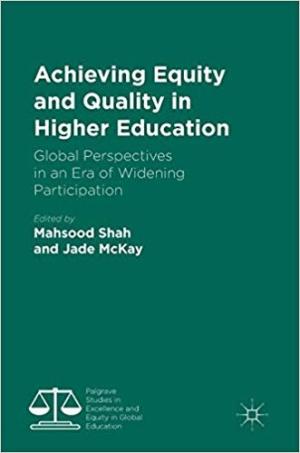
Across the world, higher education is witnessing exponential growth in both student participation and types of educational providers. One key phenomenon of this growth is an increase in student diversity: governments are widening access to higher education for students from traditionally underrepresented groups. However, this raises questions about whether this rapid growth may in face compromise academic quality. This book presents case studies of how higher education institutions in diverse countries are maintaining academic excellence while increasing the access and participation of students from historically underrepresented backgrounds. Including case studies spanning four continents, the authors and editors examine whether increasing widening participation positively impacts upon academic quality. This volume will be of interest and value to students and scholars of global higher education, representation and participation in education, and quality in higher education. (From the Publisher)

There are these two young fish swimming along and they happen to meet an older fish swimming the other way, who nods at them and says "Morning, boys. How's the water?" And the two young fish swim on for a bit, and then eventually one of them looks over at the other and goes "What the hell is water?” David Foster Wallace, This Is Water Upon reading this volume, I was repeatedly reminded of the late David Foster Wallace’s speech, “This is Water” (Little, Brown, and Co., 2009). Foster’s commencement speech hones in on some underlying themes of life many of those in higher education hope to instill in our students. Most importantly, I think, is the lesson that the most powerful influences on us are often those in which we are continually swimming but which we often cannot see. We must learn the practice of “seeing” the water we swim in. The practice is imperfect, messy, and will not make you particularly fun at parties, but it is vital for any transformative learning to occur. We can do this in a myriad of ways, such as those laid out in this volume, by practicing reflexivity. What is reflexivity? The editors, influenced by Foucault’s concepts of discourse, knowledge, and power, define reflexivity as “encompassing a critical assessment of the significance of environment, power, and context as well as subjectivity in the delineation and construction of knowledge” (1). Reflexivity implies “a responsibility to critically examine our world, and how we position ourselves, and are positioned in that world” (1). Reflexivity is not narcissistic navel-gazing; it involves an intimate interrogation and critical examination of the personal, political, and professional. It is a practice. Contributor David McCormack describes reflexivity as the “practitioner’s attempt to turn their awareness to whatever is happening at any given moment at a personal, interpersonal, organizational, and societal perspective and to use that to illuminate the interpersonal dimension in their work” (122). The self is not freestanding – it always has a context. Why is reflexivity critical to education? Education must be reflexive in order to avoid being merely indoctrination. Education can make space for reflexivity, can give educators and students an opportunity to analyze not just “what works” but also to interrogate for whom does it work and to what end. Learners need spaces to confront dominant narratives and cultures, and educational spaces can provide just that. Contributors to this volume are primarily affiliated with the Department of Adult and Community Education at Maynooth University in Ireland. Each was invited to “challenge traditional thinking in education” (10). The chapters of this volume exemplify a myriad of ways reflexivity can be practiced in educational spaces. Despite this variety, each of these contributions emphasize the critical imaginative element among practitioners, a willingness to see things as possibly otherwise. Whether the reflexive practice happens within discursive analysis, writing, theater-making, transformative learning, systems theory, defining citizenship, facilitative work, or narrative inquiry, it requires imaginative capacity and a willingness of the practitioner to critically examine the very bedrock of their experience and the systematic assumptions underlying their everyday reality. This book would be especially helpful for educators and administrators hoping to equip their students with theoretical tools and practical exercises aimed at “bringing to light dynamics of power which privilege conformity” and “revealing the normally occluded dynamics of dominant discourse”(6). It is also a resource for those who see themselves occupying hybrid spaces: those who acknowledge a multiplicity of knowledges and competing and intersecting realities and experiences, who interrogate and trespass boundaries, and, overall, who strive to “see” the water in which they swim.
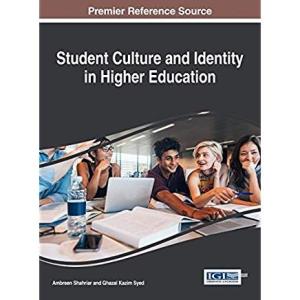
The pursuit of higher education has become increasingly popular among students of many different backgrounds and cultures. As these students embark on higher learning, it is imperative for educators and universities to be culturally sensitive to their differing individualities. Student Culture and Identity in Higher Education is an essential reference publication including the latest scholarly research on the impact that gender, nationality, and language have on educational systems. Featuring extensive coverage on a broad range of topics and perspectives such as internationalization, intercultural competency, and gender equity, this book is ideally designed for students, researchers, and educators seeking current research on the cultural issues students encounter while seeking higher education. (From the Publisher)
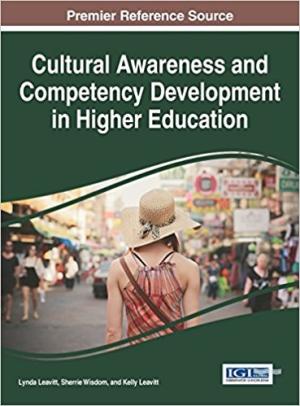
This multidisciplinary compilation covers the vast and varied landscape of culturally-aware curriculum and global competence initiatives currently being implemented worldwide by institutions of higher education. With authors hailing from the US, Australia, Canada, Spain, Turkey, the Czech Republic, and the UK, this text is truly global. Despite the multitude of topics, populations, and programs, the universal theme running through each chapter is globalization. Whether the contributor’s focus is on the historical genealogy of a loaded term such as “culture” and the exploration of its uses and misuses, or a call for global competency for students being trained in construction, the combined goal of the text is to encourage those in higher education to push for a culturally-aware curriculum focused on equity and respect and to provide their students with the tools they need to thrive in a global marketplace. There is a myriad of ways to meet these goals; this text itself is a testament to the variety of methodologies and practices currently set up to meet said goals. Changing racial demographics, especially in the US, are highlighted in multiple chapters as one of the many reasons American college students need cultural awareness and competency development programs. With Hispanics now constituting the largest minority population in American colleges at 17 percent , institutions of higher education are feeling the effects of changing populations (112). By 2060, “57 percent of the total population will be from minority groups” (238). More international students are studying in the US, many coming from countries where English is not the official language (“58 percent from China, India, South Korea, and Saudi Arabia”) (24). In the 2014/15 academic school year, “Chinese students made up more than 31 percent of all international students” (309). Not only do international students, as well as international teachers, face linguistic challenges but many come to the US with differing understandings regarding classroom etiquette and cultural norms. Hence, no matter if students are studying abroad, engaging with international students or teachers in their home country, or are themselves from minority groups, globalization affects higher education on many levels. Global education is not limited to study abroad programs and studying abroad does not necessarily result in changed perspectives. As David Starr-Glass notes, one must keep in mind that “student mobility is only a structure” and that “what can lead to a change in student perception and sensitivity, lies not in the structural aspects per se, but in the teaching and learning content of these experiences” (311). According to the volume’s editors, global education leading to cultural competence is ongoing through “interactions with an international student body, study abroad experience, or with technology in which students from different cultures are afforded the opportunity to exchange ideas” (xxi). Chapters featured in this volume focus on particular programs, initiatives, and case studies regarding implementation (dual-language, study abroad, on-campus activities), specific student populations (international, STEM, future educators, and construction professionals), and significant related topics (White Privilege, social justice, civic responsibility). Although global education might often be regarded as relating to external forces, many of the practices developed to increase students’ global competencies and cultural awareness start internally. As the authors of the chapter “Developing Social Justice and Inclusion Competencies” note, courses utilizing self-reflection, “require students to identify and make meaning of their multiple and intersecting social identities” (79). This self-reflective practice is also vital for professionals working in institutions of higher education. Global education demands not only openness to learn about and learn from others, it also requires, as many of these contributors illustrate, students, staff, and faculty to reflect on their own assumptions and experiences. As an academic advisor for foreign language programs at the University of Georgia and a former instructor of religious studies, reflecting on this resource in all of its multidisciplinary and multicultural glory gives me confidence in the efforts being made to educate college students not just according to educational and professional standards but also with the intent to teach them cultural humility. Even critiques of the current models and ethos around global citizenship found in this volume exemplify the thoughtful consideration going into this research. This compendium is an excellent resource for anyone invested in higher education, especially those working to encourage global citizenship among college students.

Upon reading the varied chapters that constitute Digital Story Telling: Form and Content, I could not help but be reminded of Salman Rushdie’s comments on the power of story. Those who do not have the power over the story that dominates their lives, the power to retell it, rethink it, deconstruct it, joke about it, and change it as times change, truly are powerless, because they cannot think new thoughts. (1991, Dec. 12, New York Times) Rushdie’s words illustrate the demands the postmodern world places on all individuals. It is a world replete with a multiplicity of stories in a myriad of forms… stories of domination and liberation, state narratives and personal accounts, corporate media renderings, and cellphone videos. In this world, the personal and political are not easily divorced. It is a world eager for new mediums which can offer the individual tools for agency and a space in which to tell, retell, rethink, deconstruct, joke about, and change their story. Digital Storytelling (DS) appears to be one such medium. What is DS? This volume’s editors, Mark Dunford and Tricia Jenkins, describe it as “a simple, creative process whereby people with little or no experience of computers gain the skills needed to tell a personal story as a two minute video using predominately still images combined with recorded voice-over, and often including music and/or other sounds” (3). The end products are “self-representational stories which emerge from a collaborative workshop process using a ‘Story Circle,’ in which a range of writing stimuli and other activities are used to develop trust within the group and ‘find’ the story” (3). Much of this definition comes from a pioneer in the field of DS, Joe Lambert, whose Digital Storytelling workshops, terminology, and methods have shaped the DS movement. DS is a form of participatory media in which political activism is embedded in its very practice. Lambert describes how in the 1990s he and those he was working with “thought of the Internet, new low-cost digital media production tools, and the distribution opportunities of the web as major advances that could promote global democracy and liberation” (22). The advent of the Internet for such a medium is tantamount to the proliferation of the printing press in sixteenth-century Europe. One need only look to social media platforms such as Facebook, YouTube, and Instagram to see how the Internet and low-cost media production tools have changed what we watch and how we watch it. DS is a precursor to this platform proliferation and the motivations driving it as a process appear to have been less fiscally motivated. One of the paramount intentions of DS is to provide the voiceless the means to be heard. Of course, DS workshops have facilitators and funders, both of which, intentionally or not, are intimately involved in the creation and dissemination of these personal stories. The volume is segmented into four elements or parts: Practice (five case studies from Kenya to the UK of DS in action); Content (pieces addressing the role content, especially content of a political [Simsek] or socially provocative [Kuga Thas] nature, plays in how that content is created, collected, received, parsed, and disseminated [Lewis and Matthews] and licensed [Spurgeon]); Form (insights garnered from when the cultural specificity of the DS model requires modification such as in Japan, Romania, and Ireland); and Understanding (three essays honing in on the limits and potential of DS as a political and personal force in the world). The volume culminates with Nancy Thumim’s chapter “Therapy, Democracy, and the Creative Practice of Digital Storytelling” in which she reflects on the unifying themes of the book (DS as democratizing work, DS as therapy, DS as meaning-making, reflection, presentation, and representation) as well as the logistical and ethical challenges DS faces (issues of ownership in regard to co-created media, the afterlife of created materials, restructuring workshops to accommodate participants of disparate backgrounds and differing needs). DS, in its varied iterations, straddles the personal and public and opens up a space for creativity among communities created by the DS workshops and those affected by their material output (artifacts). Perhaps the most compelling aspects of this volume are the stories (as found in Rainbird, Henry, Hardy and Sumner, Lewis and Matthews, Ogawa and Tsuchiya, Alexandra, and Brushwood Rose) of those persons challenged with mediating and assisting others (often those whose voices go unheard) through the process of narrating their own stories. As an academic advisor, the power of storytelling for self-actualization is readily apparent to me. Like the DS workshop facilitators in this book, academic advisors are involved in a co-creative narrative process. Advisors help students reflect on their goals and values and provide them with tools and mechanisms for authoring their own academic life story. The examples of DS workshop facilitators agonizing over how active to be in the creation of these personal stories should resonate with any reader who works in a co-creative capacity (advisors, administrators, teachers, parents, therapists, and so forth). The stories presented in each of these chapters are rather remarkable and, indeed, powerful. Anyone interested in modern media, narrative, social activism, communication studies, film, as well as those versed in DS scholarship, will find this a compelling read.
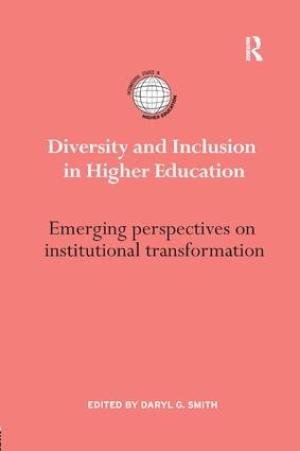
Diversity and Inclusion in Higher Education is a well-timed book. Not only are institutions of higher education tasked with preparing students for a globalized and increasingly technically-driven future, many are still reeling from the recession of 2008. According to Smith, these factors push much needed institutional-wide transformation regarding diversity and inclusion from a centralized position to the margins of universities’ priorities. While use of the term diversity in the general study of higher education organizations means “variety in institutional types” (3), in Smith’s volume diversity, infers more. It “refers to historic and contemporary issues of how institutions reflect people from diverse backgrounds and how institutional transformation is occurring with respect to diversity and inclusion for all identities that have emerged as salient in given political, social, and historical contexts” (3). Set in three parts, Smith begins with a section on the significance of context and then directs readers to five fascinating case studies looking at the status of institutional transformation and diversity in South Africa, the UK, the United States, Brazil, and among indigenous institutions in the United States and New Zealand. Last, the editor explores the similar themes, as well as identifies significant differences, which cross-cut the various studies and looks ahead at possible future implications of policy and research regarding diversity and inclusion on institutions of higher education. Perhaps one of the most fascinating, albeit complex, aspects of studying human diversity is not just the great variety of salient identities (race, ethnicity, class, gender, sexuality, religion, abilities, etc.) but also the “increasing awareness that any given individual has multiple identities and that those identities intersect one another” (11). And the significance of one salient identity may differ given the national context. Smith observes that “while race has been central (though different) in both the United States and South Africa” there are places in Africa where “tribal affiliation, language, or religion” may be the more salient social identity among group members (10-11). Institutions are in no way divorced from the complexities and nuances of identity. Smith aptly notes that “institutions reflect the cultures, norms, values, and practices” of the people in the institution, “the historical and social circumstances in which institutions are developed,” and they “reflect the stratification and values of the larger society” (13). This also means that institutions easily replicate the dominant systems of social stratification and inequality if they are not careful. However, if they are intentional and committed to connecting diversity with the core values of their institution, they can “act as catalysts for change” (13). Jansen’s chapter on the complexity of institutional transformation in South Africa addresses the many boundaries still blocking Black students’ access to previously White universities, despite the end of apartheid. Jansen recommends seven fundamentals of deep transformation on a racially divided campus and walks readers through the treacherous terrain of the difficulties which South African institutions have faced. As the first Black Vice-Chancellor of the Free State, he has witnessed radical changes on South African campuses and provides some valuable insights for dealing with deep-seated suspicion between White students from conservative Afrikaans homes and Black students from political African homes. Both parties feel victimized and, while many of the students did not live through apartheid, Black students often “feel the legacies of those apartheid troubles in their personal circumstances” and many White students feel the need to protect the Afrikaans language and see the university as an “ancestral home” (38-39). The challenge for leaders like Jansen is balancing reform and reconciliation. Eggins’ chapter on institutional transformation in the UK addresses a half-century long upheaval in which the diversity of institution type played a significant role in the quest for diversity in higher education. Polytechnic schools developed in the 1960s and created a binary system of education. In 1992 “almost all polytechnics, together with a number of higher education institutions” were made into universities, to create a more unified educational system (47). Eggins maps out various “theoretical approaches to institutional diversity that address diversity and mission vertically and horizontally” (47). One of the most compelling aspects of this chapter is the author’s review of the effects of equality legislation on institutions of higher education in the UK. Moses’s chapter on the challenge of diversity for leadership in the United States offers readers clear and powerful suggestions on how institutions must reframe the case for diversity. She also enumerates five ways US institutions are linking their institutional goals to the value of diversity and provides readers with ways to think about diversity as it relates to other institutional core values. This chapter is pragmatically focused and makes an excellent resource for those in leadership positions within higher education, especially those challenged by “the institutional inertia that often pushes back against this kind of difficult cultural and institutional change” (69). Another poignant example of the varied and unique contexts in which institutions of higher education find themselves is illumined by Neves’ chapter on diversity in higher education within Brazil. As in the UK, equality legislation plays a significant role in Brazil’s embrace of diversity. Since the 1930’s, Brazil has been plagued by “the myth of racial democracy” which attempted to mask the overt racism (104). It took a new Brazilian Federal Constitution in 1988 which “defines racism as a crime” to legally recognize the work of social movements (especially among Blacks and feminists in the country) towards diversity and inclusion in Brazil (104-5). Although the Constitution “ensures free schooling at public institutions” only about one-tenth of Brazil’s higher education institutions are public (106). A highly competitive selection process which requires written exams (vestibular) means a majority of those admitted into the free schools hail from the best high schools and from the higher socio-economic classes (107). Neves expounds on the many programs implemented to help bridge the inequality gap, including access to “pre-university entrance exam cram courses” for African descendants and indigenous peoples, scholarships for low-income students, and support for projects that “produce knowledge on ethnic-racial themes” (109). Parker and Johnston look to indigenous institutions for insights into how universities can meet standards of academic excellence while honoring the culture and traditions of diverse populations. As they so aptly note, “education is not a neutral or objective concept” (129). Institutions of higher education are not value-free zones. They reflect the “societal norms established by the dominant group” (129). Often, merely by “carrying out their academic mission as usual” these institutions end up “perpetuating the very inequality and marginalization that higher education institutions seek to overcome” (130). In the US, tribal colleges and universities “must combine western and tribal paradigms for the success of their students” (133). In New Zealand, indigenous institutions (known as wananga) are theoretically and practically informed by “Maori knowledge, pedagogy, and philosophy” (136). Indigenous institutions take intentional steps to create environments which support their students and community members as well as prepare their students to engage in world markets often dominated by western cultural values. Institutions of higher education around the world could learn a great deal from their example. As disparate and unique as the institutions of higher education (HEIs) in these case studies are, Smith does an excellent job highlighting themes that cut across all of them. For each, historical and national context matters and even if race matters in all contexts, race matters differently in different contexts. The intersectionality of identities is complex. HEIs are reacting to expanding globalization, increasingly rapid changes in technology, fiscal austerity measures, and the political mood swings prevalent in public policy debate. There is hope, however. If HEIs are challenged in many of the same ways, perhaps they can learn from one another as well.
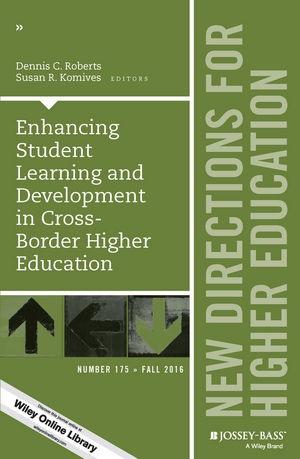
This volume is dedicated to cross-border education, a type of internationalization focused on education strategies that move across national and regional lines. Editors Roberts and Komives cite J. Knight’s description of internationalization as “the process of integrating an international, intercultural, or global dimension into the purpose, functions, or delivery of postsecondary education” (10). Internationalization, at first blush, may appear but a mere euphemism for globalization, a rather deleterious concept especially when partnered with education. Roberts and Komives, however, are quick to point out how internationalization differs from globalization in both purpose and process. Globalization promotes rampant product production, increased uniformity, the ubiquity of certain products and hegemonic narratives, and is often associated with the pernicious effects of the exploitation of vulnerable populations around the world. In contrast, “internationalization is a process of infusing international ideas across a variety of functions and experiences” in which “distinct attributes of identity are accorded value” (10). Internationalization, according to Roberts, “embraces the inevitable – a shrinking planet with growing shared reliance on each other” but also seeks to preserve culture (10). Cross-border education (CBE) goes beyond the traditional study abroad mindset; it requires “infusing international, cultural, or comparative perspectives in existing courses,” “modifying teaching and learning processes through virtual experiences,” and incorporating scholarship from other cultural settings to bring the world “home” to students within their own schools (16). It also encourages fluidity of people, programs, projects, and policies across national and regional lines and places a high premium on critical analysis of the cross-cultural application of educational practices. Section one addresses how to systematically study educational practices and evaluate their transferability to a different context. Darbi Roberts’ contribution requires readers to address how and why educational systems choose from which programs to borrow. Section two illustrates examples of student learning and development programs around the world (South Africa, China, UK, Mexico, and more) created to address specific populations and needs within their own cultural and national boundaries but which may prove incredibly useful for others throughout the world. Previously, much research on student learning and development originated in the United States, but this volume highlights the growing programs in other parts of the globe. McGlory Speckman writes about first-year village programs in South Africa, where this program was developed, and the need of many students from backgrounds of “economic, social, and political deprivation” for a communal and supportive environment as they transition to a university setting (34). Wong’s chapter is a fascinating foray into a unique population in China, students born under China’s 1979 One Child Policy, whose disruptive adjustment to university life requires universities to set up programs addressing this population’s lack of compromising skills and enhance their resiliency and self-reliance. These programs include everything from complicated team work, physical training, and mentorship to a simulation activity called the “city challenge” in which “students are given very limited pocket money and they have to earn their food by selling products they invent” (45). Chapter 5 focuses on a specific program at the University of Sheffield, UK, dedicated to “looked-after children” and “care leavers” (49). Encouraging this population towards higher education is a real challenge, as “only around 6% of English care leavers enter higher education at the age of 19, compared to 48% of a similar age in the general population” (53). Mexico’s legacy of political corruption, financial disparity between rich and poor, and a general lack of civically engaged citizens have created a challenging environment for local universities trying to educate their students to become leaders, according to Alicia Canton’s chapter. The Universidad de Monterrey (UDEM) has invested in numerous initiatives to encourage students to become involved in their communities such as implementing active pedagogies “connecting the student to current problems within the local community,” requiring every student to complete an internship at a local organization, offering cocurricular courses to develop leadership competencies, and mandating “every student perform 480 hours of service” (59-60). Section III moves readers back into the realm of theory, providing analytical tools for exploring data produced in specific student learning and development environments like those described in Section II. This section exemplifies how those designing initiatives to enhance student learning and development, especially in the arena of cross-border education (CBE), must explore the significance of context as well as content. Readers are prompted to explore prevalent cultural assumptions, national agendas, and various socio-political discourses which have informed and shaped their own definitions of learning and development, as well as those of the programs they wish to adopt or adapt. Broido and Schreiber’s chapter presents social justice frameworks for student learning and development as well as concise renderings of various pertinent dimensions of student development theories (identity development, cognitive-structural development, and self-authorship theories). Drawing on the work of Hofer and Weinstock, Broido and Schreiber note how “patterns of epistological development vary among cultures” and how cultural assumptions about knowledge, truth, and authority, can profoundly affect how students learn and develop (70). The general values of a culture “as well as the role of the family, religion, and social identity enhances a critical perspective on designing appropriate strategies for student learning and development” (75). Chapter 8 applies an ecological systems view to Singapore, a culture that highly values formal education, an attribute likely stemming from a belief among families that education is a passport out of poverty. Deference to elders and authority, possibly arising from a Confucian root in the culture, are attributes which lead to a particular learning environment, not unique to Singapore but definitely significant when considering program adoption across borders. Chen’s and Mathies’ contribution looks at increased interest in assessment and evaluation in the halls of higher education, in the U.S. and around the world, over the last few decades. The fact that college admission in many Asian cultures is controlled by the government via a national entrance exam, exemplifies just another way in which U.S., European, and Asian institutions approach education differently (89). Formerly faculty and now on staff as an academic advisor, I fully concur with the authors of chapter 10 that “in a cross-border educational paradigm, it is increasingly important for faculty and staff to orient their work and self-understanding of their roles to be that of educators” (93). The need for internationally competent staff will only become more critical in the future. Roberts and Komives close their volume with a look at how partnerships can enhance student learning and development by taking into consideration institutional motivations for transferring, adapting, hedging, or even avoiding certain programs or policies. Some aspects of student learning and development programs (such as career decision making, counseling, intercollegiate sports, student governance, fraternities and sororities, coed housing, and so forth) may work well in the “home” country but prove disastrous when transplanted into another environment. This volume will prove illuminating to any student affairs professional, academic advisor, study abroad or exchange coordinator, faculty, or administer within higher education today but it is especially germane to those directly or even tangentially involved with policy adoption across borders.
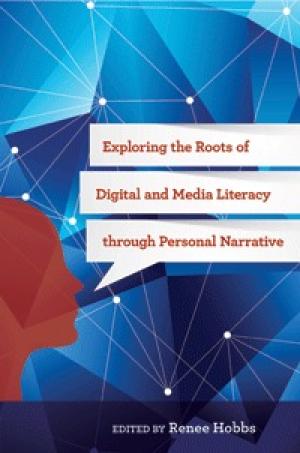
Renee Hobbs’s collection of personal narratives from leading thinkers in digital and media literacy is not only a fascinating foray into the field; it also presents various authors’ stories of encounters with dominant theorists across multiple disciplines. Sixteen authors from a myriad of academic disciplines (philosophy, education, communication studies, language and literacy, media studies, and fine arts, among others) spanning a number of occupations (professor, writer, teacher, director, and more) write out their intimate interactions with the theories and theorists (McLuhan, Heidegger, Bakhtin, Barthes, Foucault, Postman, Dewey, and others) that shaped their scholastic and personal lives. Each contribution in this collaborative work is a self-reflection, a collage made up of sundry parts of theory, experience, and practice. This collection started with Hobbs’s desire to unearth the historical origins of media literacy and trace the complex genealogy of media literacy. Hobbs diverges from the traditional historical treatise, in form as well as in content, by soliciting personal narratives from contributors, asking them to search out their intellectual grandparents, to map the DNA of the theories that shaped their lives and their work. While the subject is fairly standard, the vehicle (personal memoir) adds a compelling nuance to the investigation. If we take Marshall McLuhan at his word and the medium is, in fact, the message, then Hobbs’s collection is not only an exploration of media literacy but is also an embodiment of it. Although reticent to endorse one orthodox definition of media literacy, Hobbs describes media literacy as “the knowledge, competencies, and social practices involved in using, analyzing, evaluating, and creating mass media, popular culture, and digital media” (9). Media represent any form of communication and literacy, the ability to decipher said communication, and reaches far beyond the bounds of print. And media literacy, according to Hobbs, invites a deeper exploration of important issues concerning “heightened critical consciousness,” “the social nature of representation and interpretation,” “the dialectic of protection and empowerment,” as well as “the role of art in the practice of civic activism,” to name only a few (9). It is clear that development of media literacy is crucial not only for sustaining a world economy, connecting global communities, and engendering personal enrichment, but also vital for the creation of informed and engaged citizens. The whole collection is engaging and picking favorite contributions is a difficult task. However, I found David Weinberger’s description of his college-age identity crisis, subsequent nihilism, and profound encounter with Martin Heidegger’s concept of “Dasein,” intriguing and not a little humorous. Weinberger’s view of life and language (and therefore media), as inherited from Heidegger’s philosophy, emphasizes the inherent shared nature of media. Cynthia Lewis’s chapter explores media literacy via the theory of Mikhail Bakhtin and provides another example of the shared nature of media and how, as Bakhtin emphasized, “the word in language is half someone else’s” (78). Lewis succinctly summarizes Bakhtin’s view of language as “foundationally dialogic, intertextual, and heteroglossic” (78). Lewis also relates how her familial connection to Rabbinic Judaism’s love of dialogue, her suspicion of authority and institutions, her research interest in discourse analysis, and her role as a teacher of workshops on critical literacy brought her to love Bakhtin’s view of language as infinitely nuanced and beautifully complicated. Although previously familiar with Heidegger and Bakhtin, the work of Jerome Brunner, a cognitive psychologist, and scholar, was completely unknown to me when I picked up this book. In Hobbs’s chapter, she relives the three times she encountered Bruner’s work: as a child, in graduate school, and when she actually met Bruner - and how this fortuitous encounter led her to create this book. I am personally enamored with the role that narrative plays in personal and communal lives so Hobbs’s synthesis of Bruner’s view of people’s personal life stories as constructed, culturally shaped “variations on the culture’s canonical forms and stories” speaks to me (192). As I experienced, Hobbs’s collection about media literacy performs the function of media literacy as it explains the higher functions of media literacy. I highly recommend this collection for anyone interested in the reflexive relationship between scholarship and the personal (faculty, administrators, graduate students, academic advisors, and lay people alike). Although not a primer text on theory, this collection, by utilizing the lens of personal experience, makes an engaging text for those with even a moderate interest in theory and literacy.
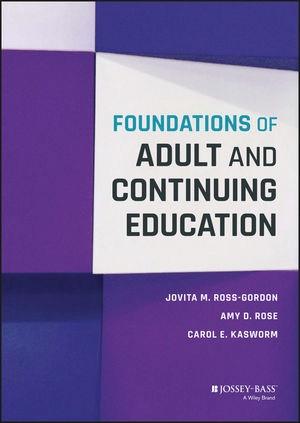
Foundations of Adult and Continuing Education lays a foundation of the history, theory, research, policy, and practice of the amorphous expanse known in North America as adult and continuing education. Undoubtedly constructed as a resource for graduate students in the burgeoning field, this text lucidly summarizes complex and daunting theory without stripping the data of interest and nuance. That is high praise for what could have easily been just another bulky textbook. Constructed of twelve chapters, divided into three sections, this work defines contemporary perspectives of the field, examines the foundations of the field, and focuses on the contexts of adult and continuing education (ix). The text gives a cursory summary of the historical rivalry between terms vying for lexical dominance of the then nascent field and while “there is still not a universally accepted definition today” one can trace certain themes and trends among the most noted definitions (3). The text presents different forms, purposes, and providers of adult education and even addresses the social forces affecting the expansion of the field (technological innovation, globalization and the global market, as well as seismic demographic shifts associated with rising levels of educational attainment, aging populations, and an increase in racial and ethnic diversity) (11-20). It outlines the prevailing historical patterns in adult participation and addresses some of the challenges that adult learners face, such as long waiting lists for ESL programs, limited formal educational background (especially among seniors [42-43]), the often-ignored relationship between social class and participation, as well as the influence race and ethnicity have on participation rates within adult education programs. Perhaps the most harrowing statistics are those involving unemployed and underemployed adults and the working poor. Foundations references the US Census of 2012 when reporting that 10.6 million Americans are among the working poor (59). According to this research, “women are twice as likely as men to be part of the working poor” and Hispanics and Blacks are “twice as likely as Whites and Asians to be among the working poor” (59). Educational attainment and working poor status appear to be linked as the U.S. Bureau of Labor Statics in 2012 reported that while only 2.1 percent of college graduates were categorized as working poor, “21.2 percent of those who had less than a high school diploma” (60) were categorized as such. Another startling revelation is related to the identity of adult educators. Identifying the boundaries of adult and continuing education (ACE) as a field is complex and requires educators to define not just education but also adulthood (“a relatively new social construct in American society” explored in greater depth in chapter 7), and to work in a field awash in acronyms and associations. They must try to construct a sense of professional identity in a field which necessarily works within structures of power and simultaneously challenges those structures (108, 117). Readers might be surprised by the inclusion of a chapter on philosophy in a text summarizing the history and vital components of what is commonly described as a predominately applied field. However, the inclusion of such is quite necessary considering that it is paramount to investigate “many ways of thinking” and the frameworks we use “for thinking about broader issues and social problems” (137). In fact, the authors describe philosophy in those exact terms. Coming from a religious studies background and being something of a theory-head, I found this chapter particularly engaging. It touches on everything from belief to Postmodernism and Critical Race Theory (CRT) and brilliantly illustrates the implications of such theory for the practice of education in general. The chapter, “Historical Perspective: Contexts and Contours,” is equally compelling because of its willingness to question the value of history for the field and investigate this history via its diffusion, “the spreading of ideas through newspapers, lectures, and academic and popular writing” (177). American history is intimately tied up with education and literacy: literacy and education took center stage during era of Reconstruction, illiteracy was viewed as a hindrance to the effort of the World Wars, and today, education and assimilation are still closely linked (191-192). Learning about the limited role the federal government is allowed, constitutionally, to play in the realm of adult education (as explicated in chapter 8) is eye-opening. The few times the federal government has stepped into the realm of adult education has had to do with immediate national interest (adult literacy, English language learning, literacy for military, and even job training for women working in production to strengthen the war effort of WW II) (264-267). The chapter “Technology and Adult Learning” could be a separate book itself. The protean nature of new technologies, the effect of technology on neural cognitive activities, and the dire need to develop “critical evaluative skills” in adults as well as in children in the age of the Internet are expertly addressed here (314). The two chapters dedicated to the expansive landscape of adult education map the varied spaces and contexts in which adult education takes place. While one chapter focuses on adult education within more formal contexts (within work, where adult education overlaps with the territory of higher education, inside programs of basic education and ESL learning, and military efforts), the other traces the outline of adult education as it occurs within a community context (faith-based programs, adult learning within museums and libraries, wellness programs, and civic engagement groups – especially those rooted in social justice). These two chapters spotlight just how diverse in topic, motivation, and method adult education can be. For newcomers to adult education like myself, the crisp explication of the regions and modes of what constitutes the field is exceptionally enlightening, as I have previously found it difficult to isolate what in fact constitutes, and does not constitute, adult education. While noticeably constructed with Education graduate students in mind, this book has something to teach anyone even tangentially interested in lifelong learning, community building, education, employment, and the effects of technology on North American culture. As an academic advisor working within the halls of higher education and a lifelong learner myself, I see this text as a great resource for graduate students and educators in all disciplines but I also recommend it to those invested in education and learning outside the confines of formal educational structures (church leaders, community organizers, volunteers, and policy advocates).
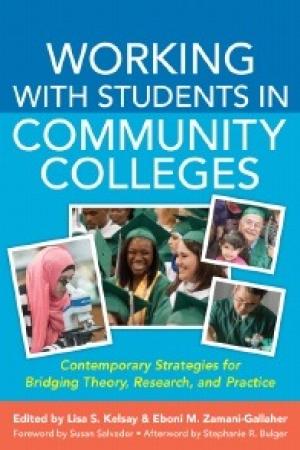
Community Colleges have historically faced numerous challenges, many generated by the very nature of their missions. The three parts of this text flesh out the theory, research, and practice most germane to the history, current state, and future of the American community college, as well as the various student populations community colleges now serve. The three sections ask readers to understand (Part I: “Understanding Today’s Community College Campuses”), support (Part II: “Welcome to Campus: Supporting Today’s Community College Learners”), and look closer at populations often underrepresented in higher education literature (Part III: “A Closer Look: Specialized Populations and Communities on Two-Year Campuses”). Understanding today’s community college campuses requires a review of the evolution of community colleges since their inception in 1900. Kelsay and Oudenhoven, in “Junior Grows Up: A Brief History of Community Colleges,” trace the origin of the American community college back to Joliet Junior College which is “now recognized as the oldest community college in the nation” (5). With a decade-by-decade overview of education in the community college setting, these authors document the vicissitudes of the life of the community college. From the GI Bill in 1944, increased enrollments of women and minorities in the 1960s, the return of Vietnam Vets, the career-focused students of the 1980s, to reduced financial support from state governments, Kelsay and Oudenhoven explicate how community colleges have risen up to meet the needs of their communities. However, these same schools face increasing pressures and challenges today and in the future. John L. Jamrogowicz illuminates these challenges in his chapter, “Community College Economic Climate, Policy Landscape, and the American Graduation Initiative.” The AGI (American Graduation Initiative) spearheaded by President Obama “showcased community colleges as potential engines to drive the recovery from the Great Recession and a return of American dominance by increasing the proportion of the population with a college education” (19). Attempting to shoulder such a heavy ideological burden and with only $2 billion of the desired $12 billion for grants allocated, it is not difficult to surmise why community colleges continue to struggle to meet federal expectations. Other chapters in Part I, such as “College Readiness and the Open-Door Mission” suggest readers look to the issues involved in the open-door mission: primarily, the need for remedial education and helping students persist to the completion of their programs. These authors cite the National Center for Education Statistics from 2011 which found that “more than 70 percent of students who first enroll in community colleges possess at least one factor and 50 percent possess two or more factors that are known to place a student at risk of not succeeding in college” (34). Procter and Uranis’s chapter on the role of technology on the community college campus also demonstrates how these institutions face a variety of resource challenges because they serve more students who may “lack a home computer and rely on the college for access to hardware, software, and Internet connectivity” (48). Financial woes, the necessity of remedial education courses, the challenge of student persistence, and students’ heavy dependence on college resources are just some of the realties those working with and inside community colleges must come to understand. The authors contributing to Part II demonstrate how imperative it is that faculty and staff know their students and contribute to and foster collaboration between academics, student affairs, and advising professionals, as well as residence life staff. The chapter “Who are Our Students?” presents a fascinating, albeit brief, overview of the diversity of students attending community colleges. Some striking statistics indicate that the average age of a community college student is 28 and, according to the American Association of Community Colleges in 2013, “59 percent of full-time community college students were employed part-time” and “40 percent of part-time community college students were employed full-time” (57-58). Support is a recurring theme in McFadden and Mazeika’s chapter on the collaboration between academic and student affairs. These authors utilize Student Development Theory (SDT) as a theoretical foundation that assists members of various sectors of the college to collaborate for student success. This chapter addresses how a theoretical foundation, facilitation of student engagement, and a model of shared responsibility among academic and student affairs professionals all contribute to assisting students. Many community colleges are instituting mandatory orientation sessions. Jessica Hale’s chapter links theories of psychosocial development of students and environmental factors known to influence development with various elements of orientation. While Hale describes the large disparity between various community colleges’ orientation programs (number of sessions, mandatory or voluntary, online or face-to-face), the author also affirms that there is evidence to suggest “that participation in orientation increases persistence from term to term” (86). While residence life may be more commonplace on four-year campuses, Barber and Phelan note that, as of 2013, nearly 25 percent of community colleges “offer on-campus housing” (95). This number is astounding considering the diverse student populations community colleges typically serve. These authors emphasize how much informal learning takes place in communal spaces like campus housing, and suggest ways in which formal learning can be integrated into residence halls (such as “inviting faculty and staff to participate in student life activities”) (97). In order to assist community college students, professionals working with them must know who they are, collaborate with other professional groups on campus, and think creatively about how to help students succeed. The final part of this text is “A Closer Look: Specialized Populations and Communities on Two-Year Campuses.” This section of the book exemplifies just how varied and complex the community college population truly is. A growing number of older adults are returning to school, especially to community colleges. Some of these “third age” learners are enticed by free tuition, motivated to stay busy and active, interested in an “encore career,” or desire to stay connected to a larger community (115-117). The chapter by Fagan and Dunklin on military veterans presents some unsettling statistics, especially regarding female veterans. One such statistic is that while “female veterans have to deal with the residuals of war” like their male counterparts, “23 to 30 percent of female veterans reported military sexual trauma while on active duty” (130). Dimpal Jain’s chapter challenges the limited scope of previous research involving Student Involvement Theory by expanding on what “leadership” means among nontraditional students, especially among women-of-color who take on leadership roles in the context of community colleges (145-147). The concluding chapter utilizes Bourdieu’s concepts of cultural and social capital to explore the complex ways in which particular student populations (adult immigrant ESL learners, student athletes, LGBTQ students, and veteran students) may be marginalized within the normative power structure of higher education. This book sheds light on multiple areas in which America’s community colleges are being shaped by the multitude of missions (academic, political, social, economic) continually assigned to them. Administrators, faculty, and professional staff at any institution of higher education as well as city, county, state, and federal officials who are invested in higher education in their locale would do well to read this book to learn how to understand, support, and look closer at students in their community.
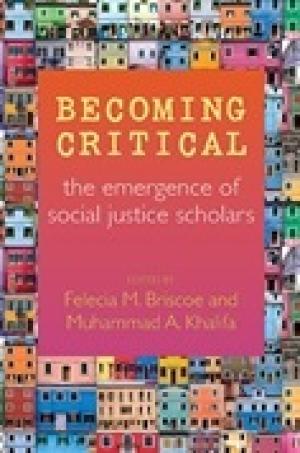
This book presents readers with eleven compelling autoethnographies that combine critical theory and scholars’ lived experiences. Each contributor deserves its own recognition for the courageous act of opening up private spaces for public discussion, utilizing their own experiences as data. Described as a “nontraditional way of knowing,” autoethnography, as a form, “challenges the criticism of traditional positivist epistemologies regarding ‘objectivity, absolute truth, and ‘validity’’” (13, 7). The text’s editors, Felicia M. Briscoe and Muhammad A. Khalifa, remark that they choose critical autoethnography as a genre because it “allows us to represent knowledge outside a traditional European framework” (13). Western academe is itself a culture – one historically dictated by White middle-class male norms. Autoenthographies produced by those belonging to marginalized and often silenced groups counter and disrupt narratives of the dominant academic discourse. Each of these scholars tells their own story and documents their experience of ‘becoming critical’ when they recognized the oppressive power of relationships at work in their worlds, reacted to them, and in the end, endeavored to steer society towards “greater social, political, and economic equity” each in their own way (10). These autoethnographies are, in short, counter-narratives for social justice within higher education. Drawing from such disparate sources as Comedy Central’s Chapelle’s Show to renowned theorists such as Patricia Hill Collins, Paulo Freire, and Pierre Bourdieu, these texts pull from a diverse range of mediums. While the experiences are varied and multifaceted, much of the theory drawn upon overlaps. Many of the authors use a Foucauldian understanding of the power/knowledge relationship (splendidly illustrated in Briscoe’s chapter) which suggests that power is not totally in the hands of one person. As Briscoe states, “people cannot be neatly divided into oppressors and the oppressed... we are oppressors in other ways” (120-121). Other common theories pervade the series, such as CRT (Critical Race Theory) which highlights the endemic nature of racism in American society. Many of the authors give a cursory nod to Judith Bulter’s concept of one’s identity as performative. However, Miguel De Oliver’s “We’re All Half-Breeds Now…in a Not so Ivory Tower” describes how, for the “racially ambiguous,” the space that one occupies becomes the “key to presumptions of identity” (228). In his experience, he need only occupy a particular space to be ascribed a specific identity (foreigner, Latino, “White,” Navajo, “Black athlete,” and so forth) (225-241). Whether the chapter is about a Gusii woman (Damaris Moraa Choti) living in a world of male domination, experiencing cultural pressures (from primarily women relatives) to undergo clitoridectomy, who finds solace in her family’s Christian faith and love of education or a Black, male, Muslim’s (Muhammad A. Khalifa’s) encounter of being automatically singled out in class to respond to a Boyz N the Hood trailer because in the “White imaginative” Black males are expected to identify with the gangster nature, readers will be challenged by the worlds presented and drawn into the experiences described. Sadly, there are no easy answers and speaking out against institutional injustices often has very real material consequences (as noted in the chapter “Too Black, Yet Not Black Enough: Challenging White Supremacy in U.S. Teacher Education and the Making of Two Radical Social Misfits” by Brenda G. Juarez and Cleveland Hayes). The case studies are divvied up by the contributor’s experience based on race and gender but perhaps the most instructive section focuses on the case studies documenting scholars’ intersecting dimensions of identity (race, gender, ethnicity, class, religious, and so forth). The autoethnographies in this section track how the authors embody multiple (sometimes conflicting) identities, occupy a myriad of roles, and negotiate their personal and professional identities amid the confines of higher education. In the chapter, “Working the Hyphens: Ethnographic Snapshots in Becoming Critical-Female-Black-Scholars,” El-Amin, Henry, and Laura fight the notion that there is “no room for real PhDs to take seriously scholarship that is politically, historically, and personally rooted in multiple identities” (208). These scholars’ stories – in fact, their very existence – explode the myth of the monolithic scholarly experience. As the American university becomes exponentially diverse, college professors and administrators will need to be well-versed in critical theory as well as actively engaged in dialogues on difference. This book exposes the reader to both. Readers need not be educational professionals or “theory heads” to benefit from the stories presented here; anyone invested in social justice and educational equity will be rewarded by hearing these voices.
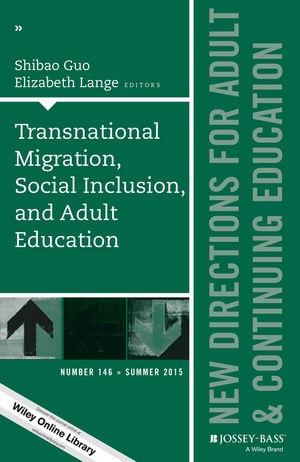
Adult education is an area of study and application that has helped bridge the gap between immigrant populations and the bureaucratic systems regulating said populations. This has been accomplished by implementing formal and informal training as well as collaborating with settlement services and other programs. Sadly, the bent of much of this training (specifically within Canada, the U.S., and Australia, in which this volume’s featured studies are located), was geared historically toward assimilating immigrants rather than integrating them into their host countries. Even today, the underlying narrative of immigration policy in these countries is highly colonial and assimilationist. This volume attempts to elucidate the key conflicts at work between immigrants, host countries’ policies, and service workers. Using Nancy Fraser’s theoretical constructs of redistributive, recognitive, and representational justice, the authors present solutions and insights into how adult education as a field can assist immigrants in challenging exploitation and influence policy towards a more socially just outcome. Applying Fraser’s theory to adult education, Shibao Guo defines recognitive adult education as one that “affirms cultural difference and diversity as positive and desireable assets” (15). This collection addresses the conflicting interests at work within immigration and education and points to possible ways adult educators and others can mitigate the negative realities that immigrants face. The topic of immigration is dense and multifaceted so thankfully the chapters are concise and accessible. Given that “the United Nations now estimates that 232 million of the world’s population lives outside the country of their birth,” transnational migration can no longer be ignored (2). One takeaway from this collection of nine chapters is that there is a marked disconnect between immigrants’ experiences and the policies created to regulate them. Immigrants face a myriad of challenges: the devaluation of foreign credentials, possible exploitation, racism, discrimination, heightened security policies of receiving countries, and broken bureaucratic systems. The nature of immigration has also changed. Shibao Guo provides a helpful description of how transnational migration is different from other types of migration by defining it as “multiple and circular migration across spaces of migrants who maintain close contact with their countries of origin” (7). This type of migration is a far cry from migration patterns of the nineteenth and twentieth centuries when migration was often described as “one way” and immigrants were expected to completely assimilate into the receiving country’s culture, leaving all traces of “foreignness” behind. Each of the chapters echo Shibao Guo’s call for adult education to “continue its long-standing commitment to social inclusion by working toward a more inclusive adult education squarely focused on the benefit of marginalized adult learners (e.g., workers, farmers, women, racialized minorities)” (8). The statistics reported are simply staggering. Bonnie L. Slade cites the Longitudinal Survey of Immigrants to Canada (LSIC), which reports that “although 76% of new immigrants have at least one type of international credential, such as a university degree, 70% experienced barriers in gaining access to the Canadian labor market at an appropriate level” (67). As Slade and others note, the devaluation of foreign creditials often leads to underemployment or unemployment, especially for immigrant women. Critically studying the language used in immigration policy and the theoretical position taken by policy makers may also assist adult educators in unpacking some of the undercurrents of racism and colonialism still at work in policy creation. As Edward Joaquin and Juanita Johnson-Bailey point out, the “issue of immigration has generally been cloaked in the language of patriotism and nationalism” (79). While overt racism and bias may be shunned in modern discourses around immigration “predjuice has become coded and wrapped in new, less offensive language and discussion” (80). Joaquin and Johnson-Bailey also suggest that adult education programs “adapt their curriculum to educate learners about transmigrational immigrant education concerns” as well as “infuse strategies that address the needs of immigrant students” (83). Yan Gao’s chapter on ESL programs in Canada illustates how some language programs have become mechanisms to create and control workers. Yan Gao suggests that adult educators in Canada “help immigrants develop critical language awareness” which will allow them to contest unfair practices (48). Perhaps one of the most promising avenues for change comes from Tara Gibb who suggests “inviting policymakers and employers into literacy classrooms and language classrooms so that they might observe firsthand alternative forms of assessment, view holistic respresentations of language and literacy practices, and listen to immigrants’ experiences and expressions of knowledge” (60). In these instances, adult educators are being called on to actively educate themselves, their students – immigrant and nonimmigrant alike – and policy makers on these issues. This collection provides an intriguing foray into the brave new world of immigration. It lends itself not only to adult educators who work with immigrants but also to those who do not. College faculty, administrators, and staff in the Global North would benefit from reading this volume because if transnational migration continues on its current trajectory, it will vastly change our institutional as well as national demographics.
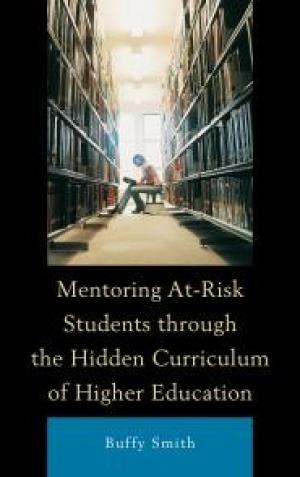
Dr. Smith’s book addresses various issues plaguing the world of higher education in the United States. According to Smith, there is continued disparity between low-income and high-income families’ access to the tools for academic achievement and unconscious cultural favoritism in academic institutions whose institutional culture is primarily informed by a White middle to upper class majority. Both patterns culminate into an amalgam of what Smith refers to as a hidden curriculum which students must master along with the formal curriculum in order to succeed academically. Because obtaining a college degree has the potential to increase a student’s chances at financial security for themselves and their families, being unaware of the hidden curriculum within an academic institution could cost students a great deal. If higher education is still viewed by many Americans to function as “a ladder for upper mobility for the masses of people who were not lucky enough to be born into wealthy families,” then the limitation of access to higher education based on financial or cultural grounds is anathema to the American dream (1). If national morality does not sway the reader, Smith also presents a more utilitarian argument for those who see the civic benefits of a highly educated population (better health care centers, schools, social services, lower crime rates, and a stronger democracy). If those two arguments fall flat, Smith reminds the reader of President Obama’s Administration’s goal to increase the U.S. college graduation rate from 40 percent to 60 percent by 2025 (2). What does this have to do with at-risk students? The population of students often categorized in this way represent a group whose struggles within the university might have more to do with being unaware of the rules of higher education and the hidden curriculum present in their home institutions than a lack of ability, effort, or desire. Smith’s research suggests that one way to help students (at-risk and others) would be to “implement a mentoring model that explicitly teaches students how to decode the hidden curriculum” (55). Smith acknowledges that most educators do not want to admit that cultural and economic favoritism are pervasive in higher education, but research has proven otherwise. According to one 2011 survey referenced by the author, “senior college admission directors admitted to giving preferential treatment to wealthy students even if they had lower grades and test scores” (55). Full-pay and out-of-state students might find entrance into higher education easier than those needing financial assistance. Once low-income and underrepresented students make it onto campus, staying there requires facing challenges of a less overt nature… adjusting to the institution’s culture. Utilizing Pierre Bourdieu’s concept of institutional cultural capital, Smith describes universities as institutions embedded with the norms and values of the dominant group (in this case, often White, upper-class culture). Students are being ‘graded’ not only on their academic ability and progress but also their adherence to these norms and values (the hidden curriculum). According to Smith, the hidden curriculum is important because “teachers use it as an informal indicator of their students’ ability and performance in the formal curriculum” (22). If students are being graded on expectations of which they are unaware, then, per Smith, it is up to these institutions to unveil the hidden curriculum. Smith champions the academic mentor as best suited to teach students about the institutional cultural capital (cultural knowledge, behaviors, and skills that foster academic success). Academic mentors have insider knowledge of how their university works and often have access to privileged information and to social networks on campus. Outlining three cycles of mentoring (advising, advocacy, and apprenticeship), informed by four theoretical perspectives (involvement theory, academic and social integration theory, social support theory, and theory on cognitive levels and developmental stages), Smith lays out a clear but also nuanced mentoring method. While studying the systematic marginalization of students uninitiated into the culture of higher education may lead researchers to despair, Smith’s method offers many examples of how mentorship can empower and enrich the lives of both mentees and mentors. Smith’s steps recommend that mentors advise (tell students what they should do), then advocate (motivate and connect students with key resources on campus), and then, in the apprenticeship phase, “empower mentees to transform into powerful social agents who determine their academic destiny” (62-64). Her model does suggest the view that academic mentoring is a great deal like teaching… just at an intensive level. As an academic advisor, I was especially impressed with the conclusion’s section on the benefits of colleges creating mentoring institutions. Having seen students stumble unaware of the institutional culture and academic etiquette required to succeed in higher education, I hope to bring some of these theories and practices to the attention of the advising community at my university. Notably best suited for administrators and faculty within institutions of higher education, this text would also be insightful to any reader interested in education reform, academic advising and mentoring, and social equity in education. It would not hurt readers to have some familiarity with academic theory from the disciplines of sociology and education but the author does not assume that her readers are well versed in either and provides well-summarized definitions of crucial theoretical terms and concepts throughout the book. Perhaps what I found most helpful in the book were the multitude of fictionalized examples (based on actual experiences of students and mentors) of the hidden curriculum in action which illuminated for me the variety of struggles many at-risk students face.

Higher education in the U.S. is hardly a utopia. Despite common mischaracterizations in the media, neither is it an ivory tower looming, pristine and untouched, over the pedestrian affairs of plebian life below. Rather it stands in the center of academic life like a dilapidated monument which we tirelessly remodel and renovate to make relevant and meaningful in the present day and age. But what is it that needs to be preserved and what needs to be updated? Perhaps it is a kind of perverse patriotism which makes American academics believe that a free society is dependent on what the Gitlows describe as the “tripartite” academic mission of American universities: the transmission of knowledge, the extension of knowledge, and development of critical thinking (165). Academics, however, cannot ignore the other mission of higher education in America… the preparation of students for employment. It is this open acknowledgement that institutions, and those actors inside them, are working with multiple – sometimes harmonious and sometimes contentious – missions in mind, which makes the Gitlows’ book a refreshing read. Perhaps it is due to the fact that this father and son team have spent a combined seventy-five years in academia, not just as scholars but also as administrators, that their combined work presents such a reasoned approach. The authors address some of the most daunting challenges that higher education in the U.S. is currently facing in chapters entitled “The Fundraising Challenge,” “The Budgetary Challenge and Fiscal Responsibility,” “The Academic Pecking Order and the Unionization of Academic Staff,” and “Conflicts of Interest and Division I Sports.” The Gitlows also revisit some of the most devastating events American universities have faced in the last fifty years, such as the economic crisis of 2008-2009 in which schools that relied too heavily on a single source of funding found themselves strapped for cash if not perilously in the red. As new models for higher learning, such as MOOCs (Massive, Open, Online Courses) and for-profit universities, challenge the standard model of the American college experience, the authors suggest that readers should evaluate what type of threat these new modes of learning actually pose to the underlying missions of higher education. The Gitlows provide a rather optimistic view of MOOCs, deeming their introduction as “evolutionary, not revolutionary” (182). The authors see MOOCs as altering but not replacing the traditional collegiate model. For-profit institutions (like the University of Phoenix), although presenting a seemingly daunting visage to the traditional college model in the early 2000s, were finally reined in when new rules regarding federal student loans were implemented by the government in 2010. The authors suggest that now that they are being held accountable for abuses, for-profit institutions will, like MOOCS, continue to alter the landscape of higher education, but they will not bulldoze it and build a glorified strip mall of education. So if the largest threats to higher education in America are not MOOCs or for-profit institutions… what are they? The Gitlows point to conflicts of interest and Division I sports representing major threats to U.S. higher education. They write, “a lurking danger for the academic institution is the possible distortion of research motivation and faculty priorities as they assess their institutional responsibilities” (120). Research and the proliferation of patents generated by universities can be both a blessing and a curse. While the authors might present a rather reasoned argument for the nuances and complexities involved in evaluating potential threats to higher education in the U.S., they do not mince words regarding the corrosive effect Division I sports has on the academic foundation of American universities. The authors support a rather unorthodox solution to the ills that plague academic institutions which house sports empires... one that recommends “breaking the power of the NCAA and ESPN” and one which, the authors openly acknowledge, would require a massive overhaul of the current system (146). While a must read for anyone contemplating a future career as a university president or provost, this book also proves to be insightful to administrators, faculty, and policy makers, or anyone whose professional life is grounded in the world of higher education.
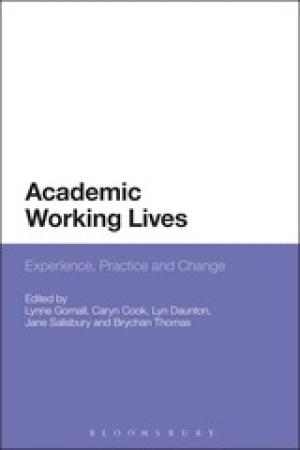
This compendium presents the reader with a myriad of international studies featuring methods of analysis on topics as varied as U.K. governmental policy regarding postsecondary education to the email habits of academics. Despite the disparate nature of the topics, methods, and analyses of these chapters, they each orient themselves around a central axis . . . that of the academic’s working life. The editors/research team assembled these short, seemingly splintered studies into the weighty tome that sits before me. The book itself exemplifies the momentum behind the project; it effectively registers the impact that thirty years of ideological, economic, technological, and political change has had on the work life of the academic. Long gone are the seemingly halcyon days of the lone academic researcher plumbing the depths of musty texts in the library. Many of these studies touch on the nature of academic work and how regulating agencies around the world (although these studies focus on the U.K., U.S., Japan, and a few other locations) have attempted to quantify the work (research, teaching, grant writing, administrative tasks, and so forth) done by academics. These various authors do not shy away from addressing how issues such as social class, gender, and social and political hierarchies continue to play out within academic worlds. A particularly compelling chapter highlights some of the divergent as well as shared problems among researchers in a number of institutions in African countries and Ireland. While other texts and studies have focused on the success or failure of educational reform in regard to student or institutional success, these studies look to the effect (good or bad or nil) these changes in educational policy, administrative practices, budgetary restrictions, technological innovations, and political and economic social narratives (such as commodification of education) have on the quotidian aspects of academic life. A few especially compelling chapters stuck out from the rest. One of these is Kelly and Boden’s “How Management Accounting Shapes Lives,” which explores the problem of the university-as-business ethos by tracking a professor seeking to combine outside research and teaching responsibilities and the skewed accounting which blocks him from doing so. On a more philosophical note, some authors wrote about what it means to examine, evaluate, and audit academic work, and others asked how grants, contract work, and contingency in academia create less than desirable conditions not just for academics but also for the research they produce. In her chapter on learning technologies, Alison Hudson utilizes Pierre Bourdieu’s theoretical nomenclature (symbolic violence and social capital, for example) to illustrate the changing dynamics in the fields of education and governance. She pinpoints the beginning of the radical shift in academics’ lives to the moment when “practice became increasingly influenced not by fundamental values and ethics, but by technologies of control aimed at changing the characteristic of the field” (248). Encyclopedic and topical, the editors have grouped these writings into five themed parts each of which contain a set of short, readable studies. Although the text is over three hundred pages, it is arranged in a reader friendly manner. These studies provide valuable reading for administrators, policy makers, academics, and anyone interested in the working lives of academics around the globe.